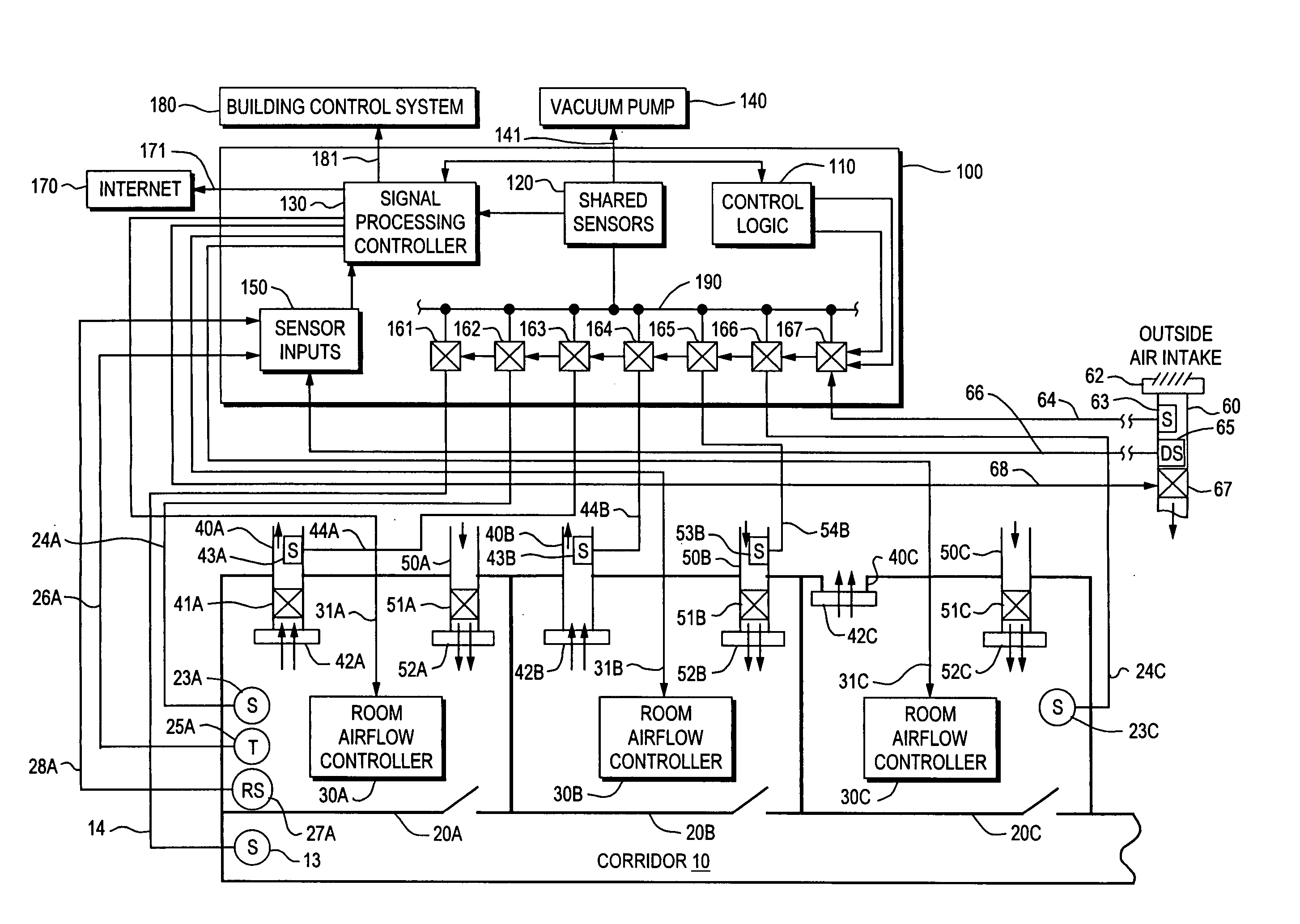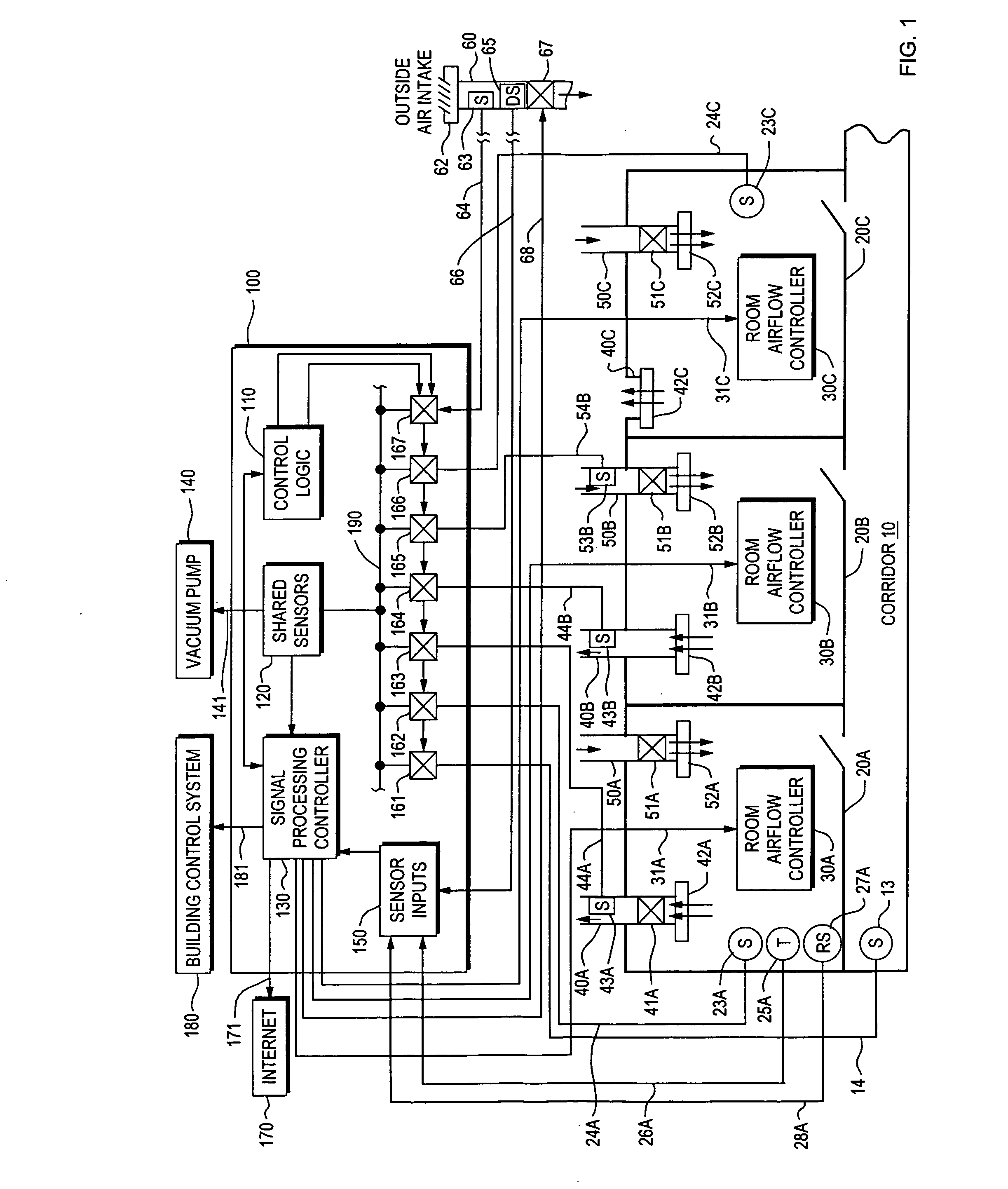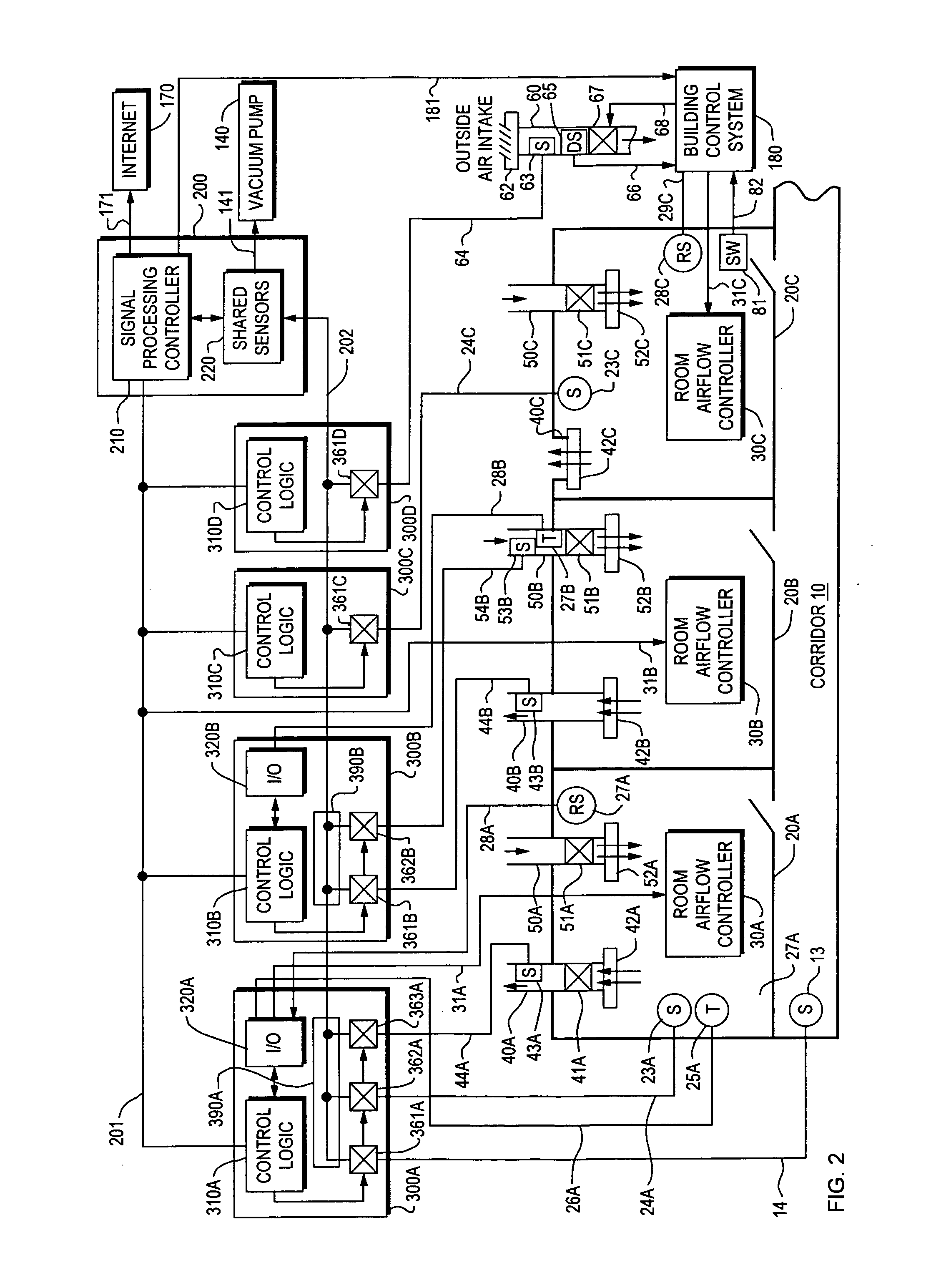These star configured systems are sometimes called octopus-like systems or home run systems and may use considerable amounts of tubing.
The expensive part is the
laser and
detector systems that are centralized.
Although high CO2 levels are often associated with poor
indoor air quality levels, it is not the level of CO2 itself that creates the discomfort and symptoms associated with poor
indoor air quality but instead the associated rise in air contaminants that are not being properly diluted.
Additionally, heretofore the use of multiple individual local sensors to create composite signals from multiple locations would have involved a large number of individual sensors used with a
building management system (BMS) or
data acquisition system with an associated large first cost and large ongoing calibration costs.
Although these two demand control ventilation approaches of room based
dilution ventilation control and
air handler based outside air control has been used for some number of years, a problem with these concepts is the potential presence of non-human pollutants such as particles,
carbon monoxide, TVOC's (
Total Volatile Organic Compounds) or other air contaminants that can accumulate and rise in value when a source of them is present and ventilation levels are low.
If for example a space is sparsely populated, and some strong and potentially irritating cleaning compounds are used in the space, problems could ensue for those existing occupants since the low level of occupants would have driven the ventilation rates down to a low level when in reality the presence of the cleaning compounds should necessitate a much higher ventilation rate.
In addition to the previously high cost of sensing these non human indoor pollutants or air quality parameters it has also not been known to those skilled in the art of
ventilation control how very different air contaminants such as TVOC's, particles,
carbon monoxide and others should be used in conjunction with
carbon dioxide information, which is itself not a contaminant, to properly control the outside air into the building through blending the elements of both demand control ventilation using CO2 plus
dilution ventilation control based on one or more air contaminants.
Most notably, temperature can not be sensed remotely with a centralized sensor since the temperature of the
air sample pulled through the air sampling conduit or tube will rapidly
change temperature to equal the temperature of the sampling conduit or tube.
Furthermore, there are also other air quality attributes such as
ozone or particles that depending on the type of tubing used or the speed of transport, may be affected by transport through the tubing.
With respect to temperature, for example, the inability of a remote sensor based multipoint air sampling system to measure the room or duct temperature at air sampling locations creates a problem in measuring such
moisture related properties as
relative humidity and
enthalpy using a multipoint air sampling system.
Thus, the difficulty in obtaining a measurement of the
air sample's temperature before it is affected by the air sampling tubing and then combining or blending that
temperature measurement with the absolute
humidity measurement has in the past prevented the use of these multipoint air sampling systems for the monitoring or control in rooms or in air ducts of the blended air quality parameters of
relative humidity and
enthalpy.
This is potentially important since local
relative humidity and
enthalpy sensors, potentially used in the
economizer of an air handling unit, are difficult to maintain and keep accurate when used as local sensors particularly for certain applications involving the measurement of outside air due to the wide
ranging temperature of this air and it's typically heavy concentration of
particulates and dust.
For example, a recent study by the New Buildings Institute of economizers and air handling units in the Pacific Northwest stated that approximately two thirds of the economizers evaluated were not working properly or had failed completely in many cases due to the failure of the sensors.
Although the savings potential with enthalpy based economizers can be significant, these systems as mentioned above, often realize limited savings in practice due in part to issues with unreliable sensor technology, as is well known in the art.
Known enthalpy sensors were based on a plastic filament that could deteriorate over time leading to failure or gross calibration errors.
Newer sensors are based on
solid-state designs, but they are still subject to drift and
repeatability problems.
Another problem with economizers is that there are times when outdoor conditions are worse than indoor conditions such as with a building located near a major highway during rush hours.
During these periods if the
economizer is calling for
free cooling, potentially 100% outside air is being drawn into the building which may be saving energy, but due to the high traffic outside the building the
indoor air quality of the facility may actually be made worse.
One known problem with
dilution ventilation in buildings using
air contaminant sensors such as for example sensors for particles, CO, TVOC's or other air contaminants is that if the outside air concentrations becomes high enough, increasing the
airflow volume of outside air or the supply air into a controlled area or room will actually increase the sensed
air contaminant levels in a space, duct or
air handler.
This can potentially create a
negative feedback situation when the inside dilution ventilation threshold levels are exceeded forcing the outside
airflow levels and or room supply air flow levels to their
maximum level.
Depending on the level of design capacity of the
HVAC system, the capacity of the air
handling system could be exceeded in this latch-up situation, causing a degradation of
HVAC system control.
 Login to View More
Login to View More  Login to View More
Login to View More 


